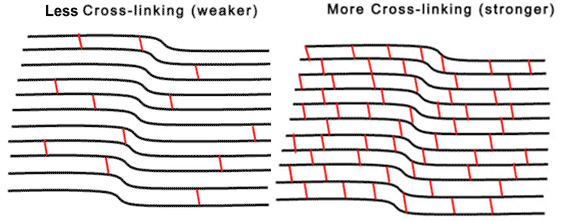Posted by: Clear Advantage in Uncategorized on February 7, 2025
Have you been diagnosed with keratoconus and are seeking treatment to stabilize your vision? While this eye condition doesn’t have a cure, there are effective treatments that can slow or even stop its progression.
One such treatment is corneal cross-linking, which has become a widely accepted solution to manage keratoconus. Keep reading to learn more about how corneal cross-linking works and how successful it is at treating keratoconus.
What is Keratoconus?

Keratoconus is an eye condition that affects the cornea, the transparent, dome-shaped tissue at the front of the eye. When you have keratoconus, the cornea thins out and bulges into a cone-like shape, which distorts your vision.
It is a progressive condition, meaning it gets worse over time as the cornea bulges more, making it increasingly difficult to see clearly. In the early stages, visual aids like specialized contact lenses can correct these issues.
However, as keratoconus advances, even these lenses may fail to provide adequate vision correction. When the cornea becomes too conical, a corneal transplant is required to restore vision.
Though effective, this procedure comes with risks, such as the potential for rejection. Fortunately, corneal cross-linking offers a treatment option that can prevent the need for a transplant, stopping the progression of keratoconus before it causes irreversible damage.
What is Corneal Cross-Linking?
Corneal cross-linking (CXL) is a medical procedure designed to strengthen the cornea and halt the progression of keratoconus. It works by reinforcing the collagen fibers within the cornea, which are responsible for maintaining its shape.
When the collagen bonds in the cornea break down, the cornea thins and bulges. By forming additional bonds between these collagen fibers, corneal cross-linking helps stabilize the cornea and prevents further distortion.
How Does Corneal Cross-Linking Work?

Corneal cross-linking is a minimally invasive outpatient procedure, meaning you can go home the same day. Before the procedure, your ophthalmologist will use numbing eye drops to ensure you won’t feel any pain.
The first step of the procedure involves removing the outer layer of the cornea, known as the epithelium. This is done painlessly as the eye is completely numbed.
Next, riboflavin, also known as Vitamin B2, is applied to the exposed cornea. The riboflavin is absorbed deeply into the corneal tissue, enhancing the effectiveness of the treatment.
After allowing the riboflavin to soak in, a UV light is directed at the cornea. The UV light activates the riboflavin, creating new bonds between the collagen fibers, strengthening the cornea, and preventing further thinning or bulging.
Following the procedure, a bandage contact lens is placed over the eye to protect the cornea while the epithelium regenerates. Typically, the epithelium will regrow completely within 14 days.
Most patients experience only minimal discomfort after the procedure, though recovery requires some care. You’ll be advised to avoid touching your eye, and eye drops may be prescribed to aid the healing process.
Does Corneal Cross-Linking Stop Keratoconus?
Yes, corneal cross-linking has proven effective in slowing or halting the progression of keratoconus in most patients. Clinical studies show that most people who undergo the treatment experience significant improvement, with the progression of the disease stopping altogether.
However, while the results are generally favorable, corneal cross-linking doesn’t guarantee that keratoconus will never progress. A small percentage of patients may not see substantial improvement, though these cases are rare.
The procedure is minimally invasive and low-risk, making it a highly recommended option for most patients. For those with keratoconus, corneal cross-linking offers the best chance at preserving vision.
Does Corneal Cross-Linking Reverse Keratoconus?

Unfortunately, corneal cross-linking cannot reverse keratoconus. Once the cornea has thinned and bulged, the damage is irreversible.
Corneal cross-linking can stop the condition from worsening, but it cannot restore lost vision. Visual aids, such as contact lenses, may still improve your vision in the early stages.
In more advanced cases, corneal implants may help reshape the cornea to a degree. However, any significant vision loss caused by keratoconus is permanent.
A corneal transplant is the only way to restore vision after severe keratoconus. That said, corneal cross-linking can prevent the condition from reaching that point, which is why early intervention is so critical.
By detecting and treating keratoconus early, corneal cross-linking can prevent significant vision loss and potentially eliminate the need for a transplant. This makes it one of the most effective treatments for managing the condition.
Who Is a Good Candidate for Corneal Cross-Linking?
Most patients with keratoconus are good candidates for corneal cross-linking. To determine if corneal cross-linking is right for you, your ophthalmologist will assess your overall eye health.
It is especially effective for those with mild to moderate keratoconus, as it can stop further progression but cannot correct significant existing damage. You must also meet other criteria, such as being in good general health and having no other significant eye conditions.
Ready to find out if corneal cross-linking is right for you? Schedule an appointment today at Clear Advantage Vision Correction Center in Portsmouth, NH!






